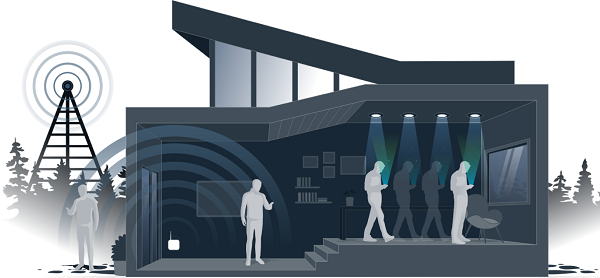Visible light communication, also known as Light Fidelity (LiFi), which transmits data through LED light, has attracted attention in the industry. European lighting companies and telecom operators including Signify, Zumtobel and O2 have trailed the technology for various applications.
As LED technology advances, the adjustable wavelength makes it possible to transferring data wirelessly via visible light like how WiFi works with radio waves. In comparison with WiFi, LiFi has two strong advantages: high speed and safety. LiFi can offer high speed data transmission as light travels faster. And since the travel range of light is shorter and cannot penetrate walls, the data transmission would be safer with LiFi.
Moreover, LiFi can be used in electromagnetic sensitive areas such as hospitals and aircraft cabins as radio waves are not involved. As results, LED-based LiFi communications provide a wide range of applications with its high speed and secure wireless transmission.

(Image: pureLiFi)
Aiming to strengthen the development of LiFi, Signify announced acquisition of Firefly LiFi, a U.S./German LiFi startup. The world largest lighting company has teamed up with Orange and other global partners to trial LiFi projects across the world.
In August 2018, telecom operator O2 announced its cooperation with pureLiFi, the UK-based LiFi company, to test LiFi transmission for paving the way for the coming 5G era. Zumtobel also installed pureLiFi’s system with its LED lights to speed up the development of LiFi applications.
Apart from broadband communication, LiFi can also be applied in indoor location-based services suggested by Taiwan’s ITRI. The institute proposed a positioning system using visible light communication integrating an optical receiver, a wearable lighting device and a data managing platform to locate individuals in indoor areas for instant communication.












